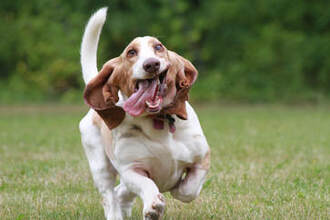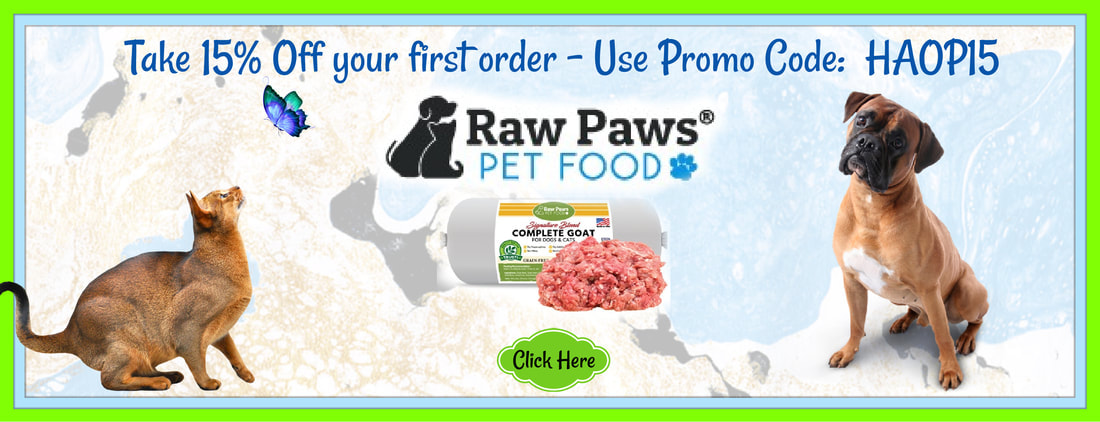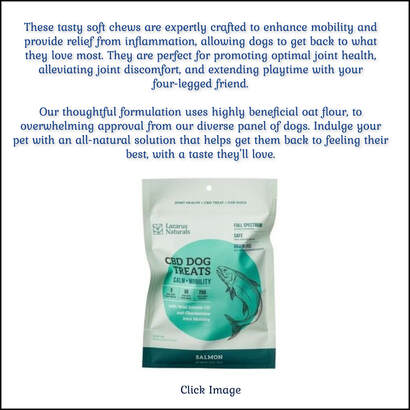Know the Signs of Heat Exhaustion in Dogs

By AustinDogZone
Heat exhaustion can be dangerous, even fatal, for dogs. It can also be devastating for uninformed or unsuspecting pet owners. Fortunately, there are some simple things that you can do to protect your dog from the dangers of heat exhaustion.
Recognize the Signs of Heat Exhaustion in Your Dog
Dogs suffering from heat stroke will normally exhibit some or all of the following symptoms:
• Restlessness
• Panting
• Increased respiratory rate
• Increased heart rate
• Excess salivation
• Vomiting
• Diarrhea
Heat exhaustion can be dangerous, even fatal, for dogs. It can also be devastating for uninformed or unsuspecting pet owners. Fortunately, there are some simple things that you can do to protect your dog from the dangers of heat exhaustion.
Recognize the Signs of Heat Exhaustion in Your Dog
Dogs suffering from heat stroke will normally exhibit some or all of the following symptoms:
• Restlessness
• Panting
• Increased respiratory rate
• Increased heart rate
• Excess salivation
• Vomiting
• Diarrhea
As the symptoms progress and the dog’s body temperature increases, signs become even more serious.
• Weakness
• Staggering
• Gasping
• Gum color may become brick red, then purple or blue (cyanosis)
• Seizures
• Coma
• Death
Treatment of Heat Exhaustion
If you believe your dog is suffering from heat exhaustion, seek veterinary care immediately even if your dog’s condition does not seem serious. Cool water can be used to begin to decrease his body temperature during the trip to the veterinarian. Towels can be soaked in cool water and used to cover your dog. You can also place the towels between his legs and across his neck. Do not use cold water or ice. This may make the situation worse.
• Weakness
• Staggering
• Gasping
• Gum color may become brick red, then purple or blue (cyanosis)
• Seizures
• Coma
• Death
Treatment of Heat Exhaustion
If you believe your dog is suffering from heat exhaustion, seek veterinary care immediately even if your dog’s condition does not seem serious. Cool water can be used to begin to decrease his body temperature during the trip to the veterinarian. Towels can be soaked in cool water and used to cover your dog. You can also place the towels between his legs and across his neck. Do not use cold water or ice. This may make the situation worse.
Preventing Heat Exhaustion
In many cases, heat exhaustion is preventable.
• Never leave your dog untended in your car, even if the temperature is mild. In a locked car, the temperature can climb rapidly to a dangerous level. A cracked window will not prevent your dog from overheating and suffering heat stroke. Never assume your pet will be okay in the car for “just a minute” while you run into the store or attend another errand. An unexpected delay could endanger your dog’s life!
• Animals should have access to shade and fresh water while outdoors. If the temperature is very warm, outdoor access should be limited to short periods of time and the dog should be housed indoors.
• If your dog is working in warm weather, be prepared to offer him water at regular intervals and understand that he may drink more water than usual under these circumstances.
• Use caution with dogs that are obese, have respiratory difficulties, are geriatric or are otherwise unhealthy. These dogs may be more prone to heat exhaustion than other dogs.
• In addition, short-nosed (brachycephalic) breeds of dogs are at higher risk of heat exhaustion than other breeds.
In many cases, heat exhaustion is preventable.
• Never leave your dog untended in your car, even if the temperature is mild. In a locked car, the temperature can climb rapidly to a dangerous level. A cracked window will not prevent your dog from overheating and suffering heat stroke. Never assume your pet will be okay in the car for “just a minute” while you run into the store or attend another errand. An unexpected delay could endanger your dog’s life!
• Animals should have access to shade and fresh water while outdoors. If the temperature is very warm, outdoor access should be limited to short periods of time and the dog should be housed indoors.
• If your dog is working in warm weather, be prepared to offer him water at regular intervals and understand that he may drink more water than usual under these circumstances.
• Use caution with dogs that are obese, have respiratory difficulties, are geriatric or are otherwise unhealthy. These dogs may be more prone to heat exhaustion than other dogs.
• In addition, short-nosed (brachycephalic) breeds of dogs are at higher risk of heat exhaustion than other breeds.
The Prevention and Management of Heat Stroke in Dogs
As we head into the warmer spring and summer months, it is important to remember heat exhaustion is a relatively common occurrence in Southern California. Every summer, dogs are presented to veterinarians for treatment of heatstroke. Some of these cases are mild, but unfortunately they can be severe and prove fatal despite aggressive treatment. As the summer heat and humidity begins, it is very important that we take our pets into consideration and modify their routines accordingly. Hyperthermia is the term used to describe an elevation in body temperature. This increase typically occurs as a response to a trigger, such as inflammation in the body or a hot environment. When a dog is exposed to high ambient temperatures, heat stroke or heat exhaustion can result. This is because dogs do not sweat through their skin like humans - they release heat primarily by panting and they sweat through the foot pads and nose. If a dog cannot effectively expel heat, the internal body temperature begins to rise. In the case of a heat stroke, panting is not enough to cool the body down. Once the dog’s temperature reaches 106°, damage to the body’s cellular system and organs may become irreversible. Heat stroke is a very serious condition that requires immediate medical attention. Once the signs of heat stroke are detected, there is precious little time before serious damage - or even death - can occur. In many cases, owners are not aware that their dogs are developing this condition until it is too late to reverse the damage. Unfortunately, every year thousands of dogs suffer from heat stroke and too many succumb to heat stroke when it could have been avoided. It is important to learn how to recognize the signs of heat stroke and prevent it from happening to your dog. As mentioned previously, immediate emergency medical treatment is necessary to prevent multisystem organ damage, and death. Early recognition of the common signs of heat stroke is critical to saving the dog’s life.
The initial symptoms of heat stroke in dogs are characterized by unanticipated restlessness. Signs of heat exhaustion include excessive or heavy panting, hyperventilation (deep breathing), increased salivation early and then eventual drying of the gums and mucous membranes as the heat prostration progresses, weakness, confusion or inattention, vomiting or diarrhea and sometimes bleeding. Among common behavioral changes are agitation, whining, barking and other signs of anxiety. As the condition progresses towards heat prostration, there may be obvious paleness or graying to the gums, more shallow respiratory efforts and eventually slowed or absent breathing efforts, vomiting and diarrhea that may be bloody, and finally seizures or coma. In the end stages of heat stroke, a dog will become listless, dull, weak, and recumbent. It may try to move to cool places but be unable to rise, will have increased difficulty breathing, and ultimately will have seizures, collapse, lapse into a coma and die.
|
The best approach to heat exhaustion is to prevent it by allowing acclimation to exercise on hot days, to make sure there is access to water, and to retreat to air conditioned areas when signs of overheating first occur. In our practice, we rarely see heat exhaustion on really hot days except for dogs that are trapped in cars, greenhouses, or similar hot environments.
|
Most dogs and people are smart enough not to overexert on those days. We see problems the first moderately hot days of the summer in active dogs that just go on being really active on these days before they have a chance to get used to the heat. We also see problems here because people assume that if a dog is in the water, that the dog won’t overheat. This just isn’t true when the water temperature gets much above 75 degrees, especially if the dog is working hard in the water.
Contrary to popular belief, heat stroke does not only happen when a dog is confined in a small enclosed place during high temperatures and with poor ventilation, although certainly this is a common cause of the condition. Many dogs develop heat stroke when they are moved from a cold to a warmer and more humid climate, during seasonal temperature fluctuations or after vigorous exercise (including play) in hot weather. As a dog’s body temperature starts to rise as a result of these conditions, it cannot release the excess heat naturally produced by metabolism and other bodily functions. While heat stroke in dogs can develop into a potentially deadly situation in as little as 20 minutes, in some instances a heat stroke can take hours to develop into a deadly situation. Very young and older dogs are at higher risk of heat stroke. Brachycephalic breeds (short noses), obese animals and long haired and dark-colored dogs are also predisposed. Dogs with hyperthyroidism, cardiopulmonary disease, laryngeal paralysis, or thick hair coats are also at increased risk of developing heat stroke.
It cannot be over emphasized or repeated enough that heat stroke in dogs can quickly turn deadly if not treated immediately and aggressively. Successful treatment requires intensive emergency care at a veterinary clinic. The therapeutic goals are to lower the dog’s core body temperature to a normal range and to identify and resolve the underlying cause of the condition. This may be as simple as removing the dog from the source of excessive environmental heat, but this is not always easy to do.
Most affected dogs will require inpatient hospitalization and intensive care for at least several days, until their temperature and clinical signs are stabilized. Again, early recognition is the key to treatment success.
Treatment will consist mostly of replacing lost fluids and minerals. Intravenous fluid therapy and monitoring for secondary complications such as kidney failure, development of neurologic symptoms, abnormal clotting, changes in blood pressure, and electrolytes abnormalities are typically recommended in cases of heatstroke. There are certain things that owners of dogs suspected of suffering from heat stroke can do to enhance their dogs’ chances of survival. First, owners should contact their veterinarian or the closest emergency veterinary clinic and alert them to the situation and their anticipated arrival time. If you can speak with a veterinarian, ask what steps you should take before and while you are transporting your animal to the hospital. If you cannot actually talk to a veterinarian or veterinary technician who can give you sound advice, common nursing care protocols involve spraying the dog with cool water or immersing it in cool water; using convection cooling with fans or cooling pads; and using evaporative cooling with isopropyl (rubbing) alcohol on the foot pads, under the front armpits (axilla) and on the groin or flank areas. Dogs should not be immersed in ice or ice-cold water by untrained personnel. Cooling a hyperthermic dog too quickly can cause its blood vessels to restrict (peripheral vasoconstriction), which can impede heat dissipation. It is also wise to monitor the dog’s rectal temperature regularly, and stop these cooling procedures once its temperature decreases to 103 F. The prognosis for dogs that have heat stroke are highly variable and can be good to guarded to grave, depending primarily upon how quickly the condition was caught and treated.
Any pet that cannot cool himself off is at risk for heatstroke. Following these guidelines can help prevent serious problems.
• Keep pets with predisposing conditions like heart disease, obesity, older age, or breathing problems cool and in the shade. Even normal activity for these pets can be harmful.
• Provide access to water at all times.
• Do not leave your pet in a hot parked car even if you’re in the shade or will only be gone a short time. The temperature inside a parked car can quickly reach up to 140 degrees.
• Make sure outside dogs have access to shade.
• On a hot day, restrict exercise and don’t take your dog jogging with you. Too much exercise when the weather is very hot can be dangerous.
• Do not muzzle your dog.
• Avoid places like the beach and especially concrete or asphalt areas where heat is reflected and there is no access to shade.
• Wetting down your dog with cool water or allowing him to swim can help maintain a normal body temperature.
• Move your dog to a cool area of the house. Air conditioning is one of the best ways to keep a dog cool, but is not always dependable. To provide a cooler environment, freeze water in soda bottles, or place ice and a small amount of water in several resealable food storage bags, and then wrap them in a towel or tube sock. Place them on the floor for the dog to lie on.
To protect your dog from a heat stroke, take the time to learn the signs and symptoms of heat stroke in dogs. Always ensure that your dog has access to water and shade in hot temperatures, and never leave your dog in a hot car even if it is only for “a few minutes”.
• Keep pets with predisposing conditions like heart disease, obesity, older age, or breathing problems cool and in the shade. Even normal activity for these pets can be harmful.
• Provide access to water at all times.
• Do not leave your pet in a hot parked car even if you’re in the shade or will only be gone a short time. The temperature inside a parked car can quickly reach up to 140 degrees.
• Make sure outside dogs have access to shade.
• On a hot day, restrict exercise and don’t take your dog jogging with you. Too much exercise when the weather is very hot can be dangerous.
• Do not muzzle your dog.
• Avoid places like the beach and especially concrete or asphalt areas where heat is reflected and there is no access to shade.
• Wetting down your dog with cool water or allowing him to swim can help maintain a normal body temperature.
• Move your dog to a cool area of the house. Air conditioning is one of the best ways to keep a dog cool, but is not always dependable. To provide a cooler environment, freeze water in soda bottles, or place ice and a small amount of water in several resealable food storage bags, and then wrap them in a towel or tube sock. Place them on the floor for the dog to lie on.
To protect your dog from a heat stroke, take the time to learn the signs and symptoms of heat stroke in dogs. Always ensure that your dog has access to water and shade in hot temperatures, and never leave your dog in a hot car even if it is only for “a few minutes”.



















